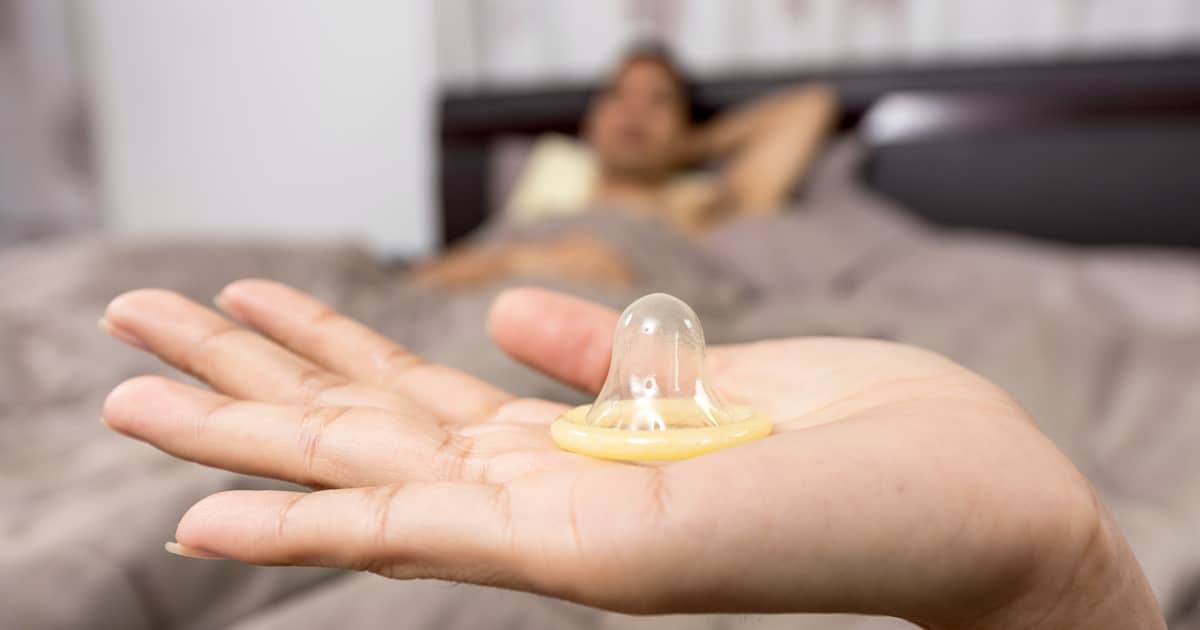If you’ve ever read the pamphlet that condoms come with, you’ve probably seen a statement pertaining to their effectiveness. Most often, this statement suggests that condoms are 98 per cent effective at protecting against most common types of STDs like chlamydia and gonorrhoea. They also work really well against HIV.
This percentage, however, leaves a small possibility of becoming infected through protected sex.
Could this ever happen to you? Is there an actual tangible and measurable risk of contracting an STD through protected sex? That’s what we’re about to find out today.
Understanding the Transmission of STDs
To determine if protected sex poses any risk, you have to understand the manner in which STDs spread.
Sexually transmitted infections are passed from one person to another through oral and/or genital contact. Bodily fluids can contain the pathogen that causes the respective condition – a bacterium, a virus or even a parasite.
Barrier contraception works by keeping mucous membranes and bodily fluids from coming in contact with each other. The most common type of barrier contraception is the condom. When put on correctly, a condom creates a reliable barrier that entirely prevents the exchange of fluids.
In this sense, it’s very important to understand that other methods of contraception like the pill, cervical caps and diaphragms are not effective at preventing STDs. These are used to reduce the risk of unwanted pregnancies but they can do very little in terms of stopping pathogens from passing from one person to another.
Do Condoms Protect Against All STDs?
Now that we’ve established condoms as the most effective kind of contraception when it comes to STD prevention, it’s time to dig a little bit deeper.
The correct use of latex condoms can majorly reduce the risk of getting an STD that passes through bodily fluids. Some studies, for example, suggest that if you’re having protected penetrative sex (using a condom), you’re 80 per cent less likely to contract HIV than in the case of unprotected encounters.
A condom, however, cannot limit skin-to-skin contact. There are some kinds of STDs that can spread this way – HPV, herpes and syphilis are just three examples. These conditions can cause the appearance of open sores. If such a sore isn’t covered by the condom and it touches the skin of another person, it can contribute to the spread of the condition.
Using Condoms Correctly
As already mentioned, the correct use of condoms is the biggest prerequisite for achieving the 98 per cent STD spread prevention rate. Following the correct method for putting on a condom is very important to keep it from slipping or breaking during the sexual act.
To put on a condom correctly, you’ll have to follow a couple of simple steps. First, open the package gently. Trying to rip it or using your teeth to get through the packaging can damage the latex.
Once it’s open, check the rim of the condom. It should form a circle around the dome and not be inside of it. If the second scenario applies, the condom will be inside out and it will not roll down properly over the penis.
A condom should be put on before any contact with a partner. It should always be rolled on an erect penis, all the way down the shaft to ensure complete coverage. Using some form of lubricant during sex could also be beneficial to keep the latex from breaking due to friction.
A final thing you may want to do is check the condom’s expiry date, especially if it hasn’t been used in some time. Like other materials, latex can become more fragile with the passage of time. In the event of a condom that has passed its expiry date, you should probably refrain from giving that a try. There would be a significant risk of breakage.
Final Verdict
You can still get an STD by having protected sex. Condoms offer varying degrees of protection, depending on the STD. They are most effective against the conditions that are transmitted via bodily fluids. STDs that are passed from one person to another through skin-to-skin contact pose more of a challenge.
The second important factor when it comes to reducing the risk of getting an STD is putting the condom on correctly. Many people underestimate the importance of the right procedure in the heat of the moment. As a result, condoms break or slip. Whenever this happens, the risk of transmission goes up.
It’s crucial to use barrier contraception correctly and consistently, even if you are in a committed monogamous relationship. In the event of trying for a baby, getting tested for the most common STDs in advance would be the best way to go.
Monogamous relationships don’t offer automatic protection against STDs. Accidents do happen and people can lie to their partners. Even if you trust your significant other 100 per cent, you will still both benefit from responsible sexual practices and couple testing.
Many Singaporean health facilities like Shim Clinic can consult you on the different methods of STDs spreading and the risk of getting such a disease. When visiting, you can also learn about the correct methods of using contraception and you can also get tested.
Shim Clinic welcomes visitors during our working days every day of the week. Alternatively, you can use our contact information to get in touch with the team and have your questions answered.

